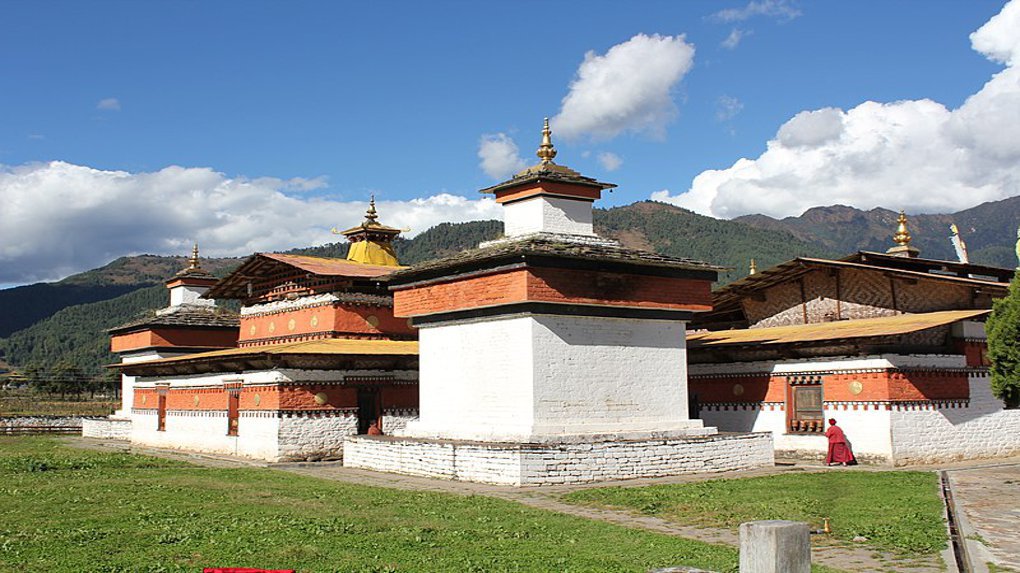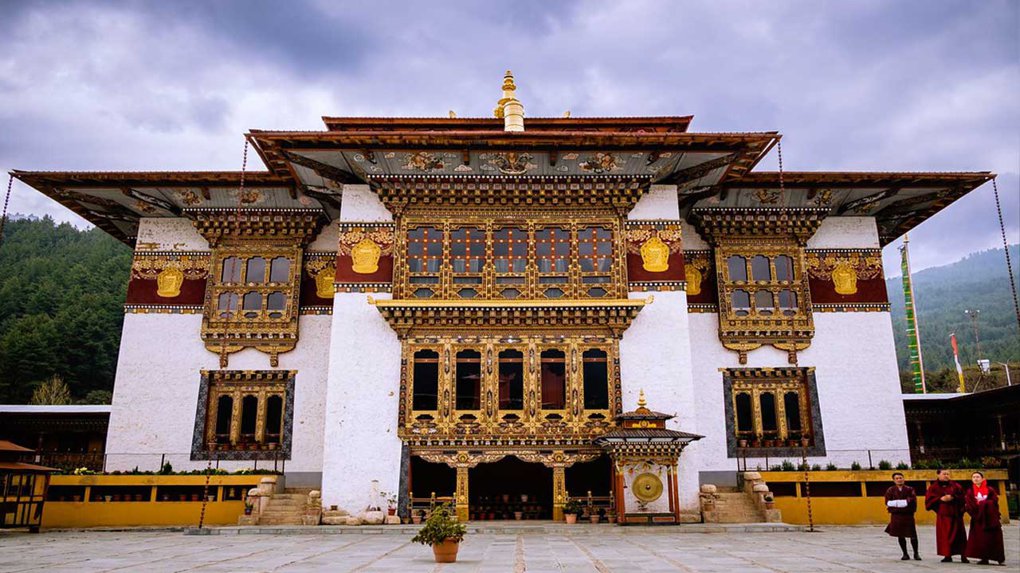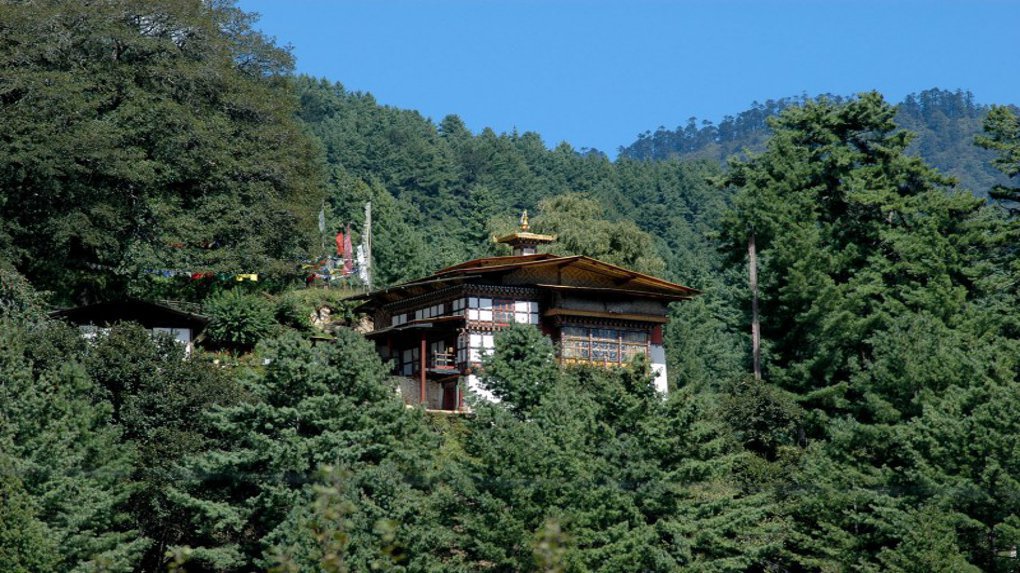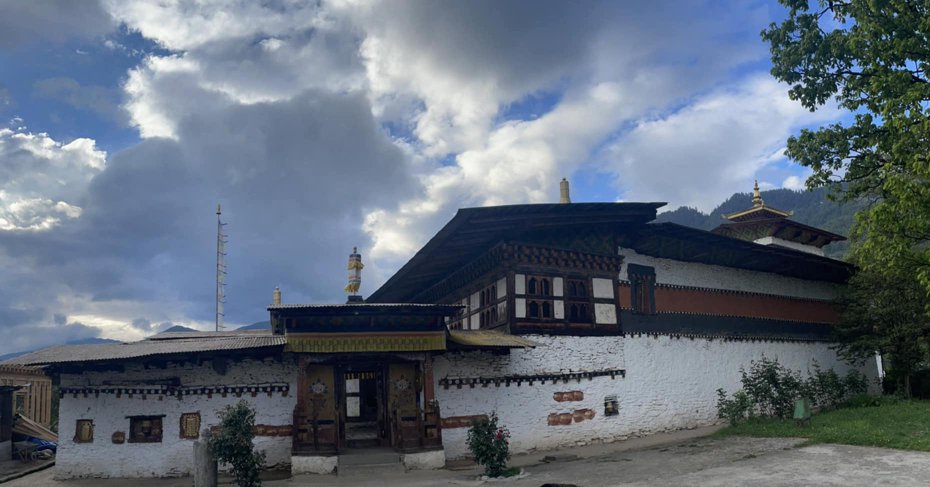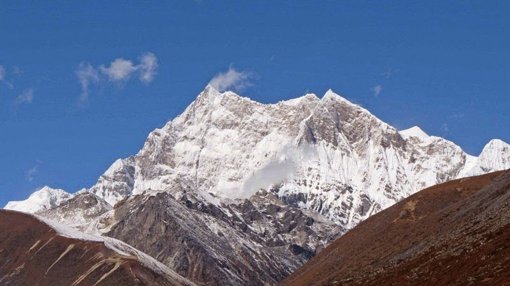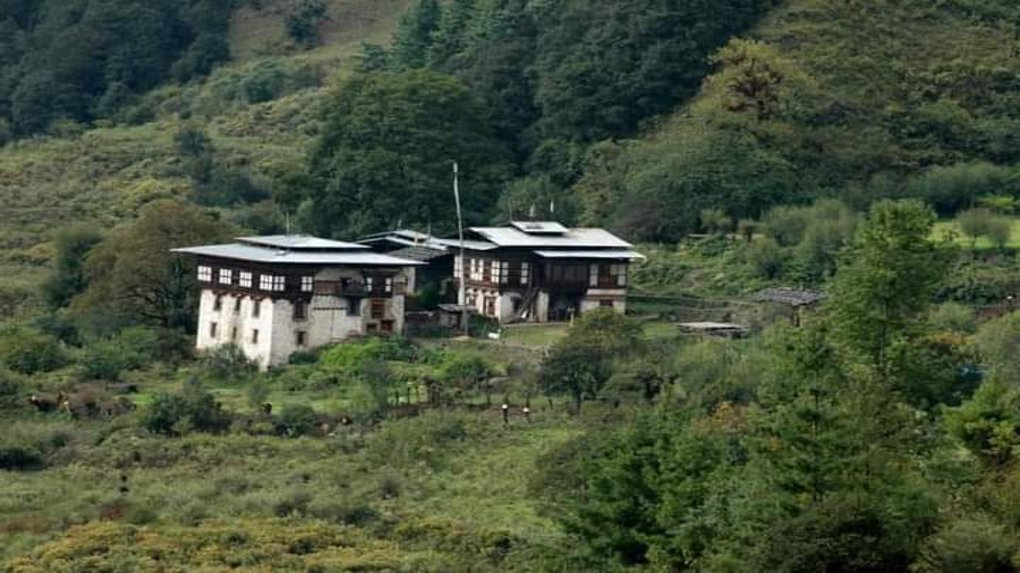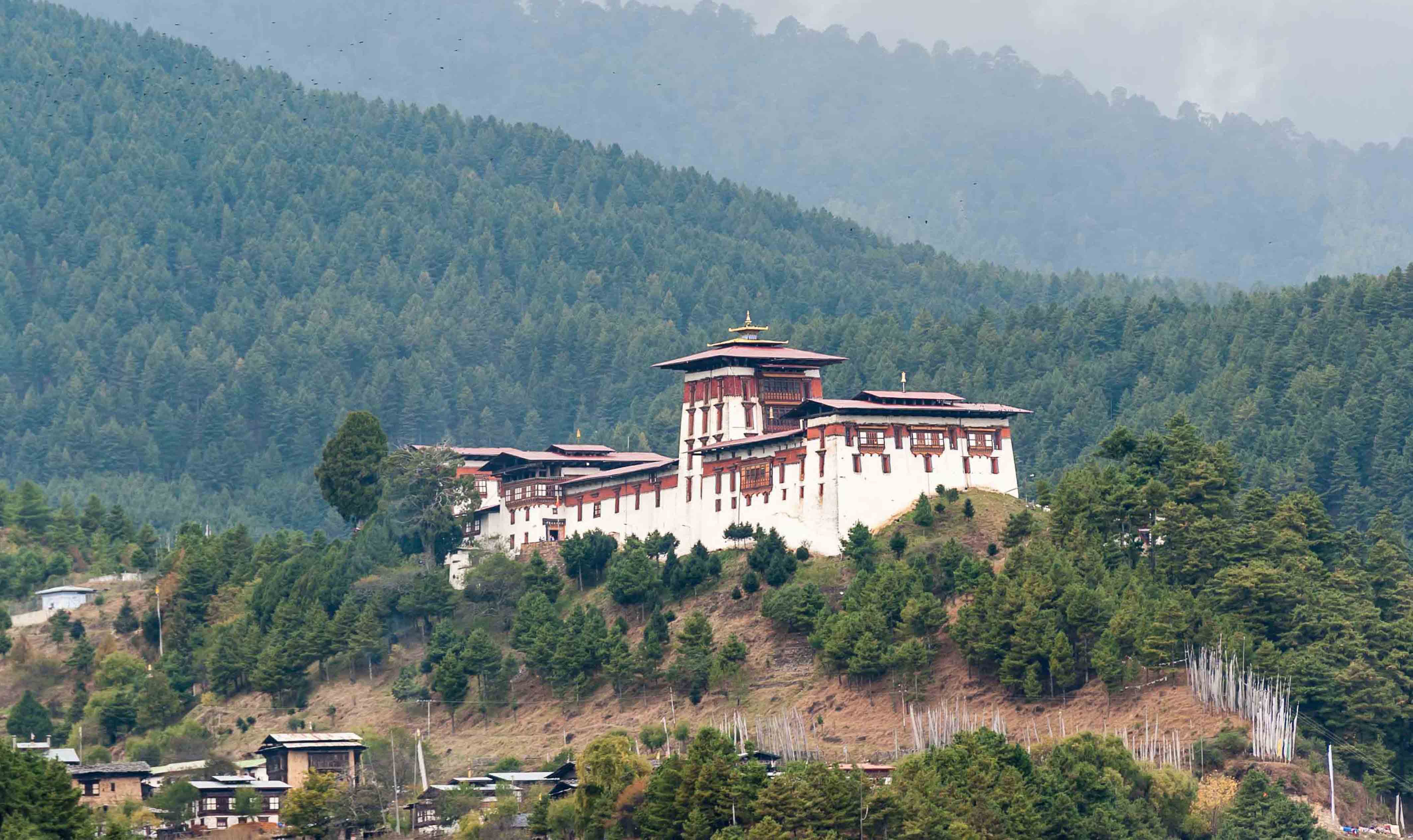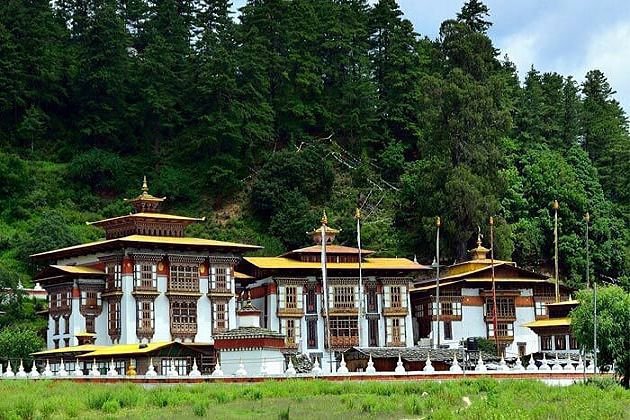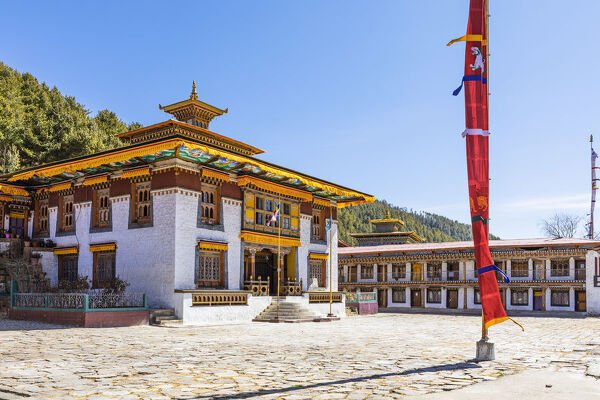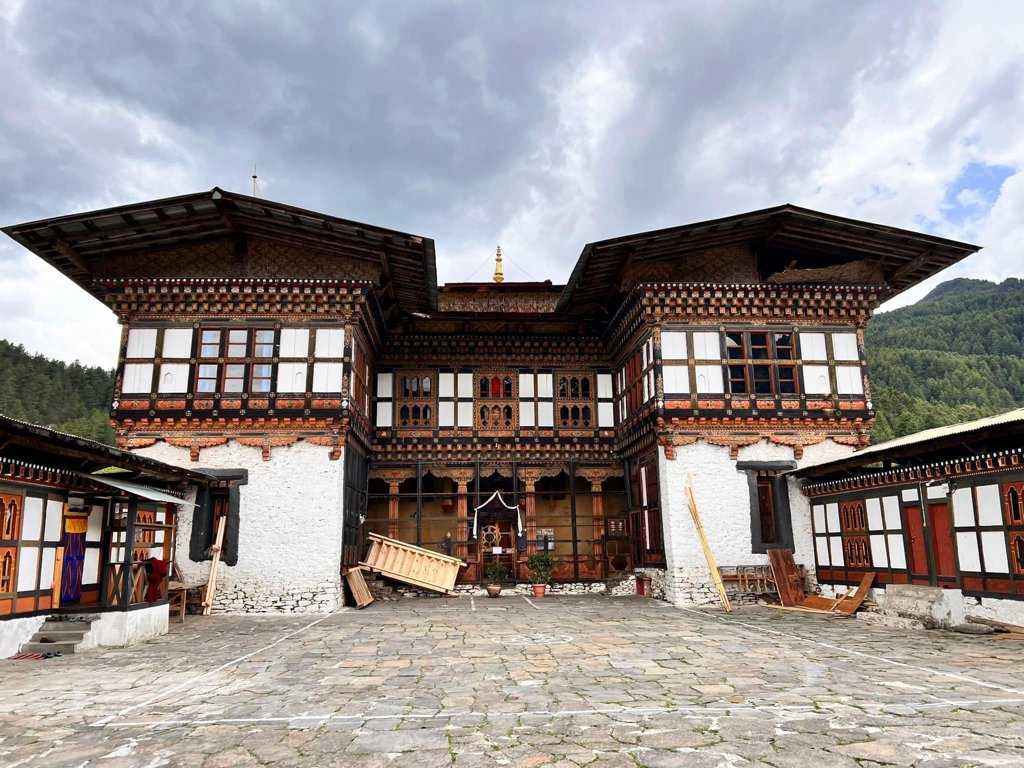Thangbi Lhakhang
Festival
On 8th to 10th October
The 4th Shamar Rinpoche, one of the two highest ranking lamas of the Karma Kagyu religious school came to Bumthang from Tibet in the 15th century in order to establish a monastery. In 1470 he founded Thangbi, located in the middle of a wide, fertile plateau overlooking the river. Following a quarrel with Pema Lingpa (1450-1521), the great religious figure of the Nyingma school and native of Bumthang, Shamar Rinpoche had to leave Tangbi. The iron chain curtain hanging in the entrance is said to have been forged by Pema Lingpa when he took over the temple.
Today the temple is once more looked after by the Shamar Rinpoche and few children are studying as monks.
Architectural style / school & Related art works
The temple has two sanctuaries and a rather large temple of terrifying deities, the Gonkhang. The sanctuary on the ground floor contains recent statues of the Past, Present and Future Buddhas and three clay statues which probably date from the end of the 15th century.
Of exceptional craftsmanship, these are portraits of lamas, one of whom is the 4th Shamar Rinpoche (1453-1524) who founded the temple.
On the upper floor, the vestibule of the sanctuary contains remarkable paintings: Zangdopelri, Guru Rinpoche’s heaven, the paradise of Amitabha (the Buddha of Infinite Light) and Guru Rinpoche removing obstacles. The main statue in the sanctuary is that of Maitreya (Jampa), the Buddha of the Future.
An adjacent room contains a magnificent library and collection of masks used during the annual festival.
The iron-chain attributed to Pema Lingpa is a fantastic articraft and similar to the one which is kept in Tamshing temple.
Social cultural function
Tangbi serves as a community temple for the village and a local caretaker performs the daily rituals.Once a year a festival called Tangbi Mani Cham takes place in autumn from the 14th to the 16th day of the 8th month of the Bhutanese calendar and is reknown for its fire blessing ceremony. The dancers are local villagers who are lay-practitioners (gomchen).
Tangbi temple is located on a plateau above the Chamkhar river north of Kurje Temple and is now recheable by road for vehicles has now reached the temple. Sheltered in a grove and surrounded by village houses, the main building has two aisles.
Source : Bhutan cultural Atlas
